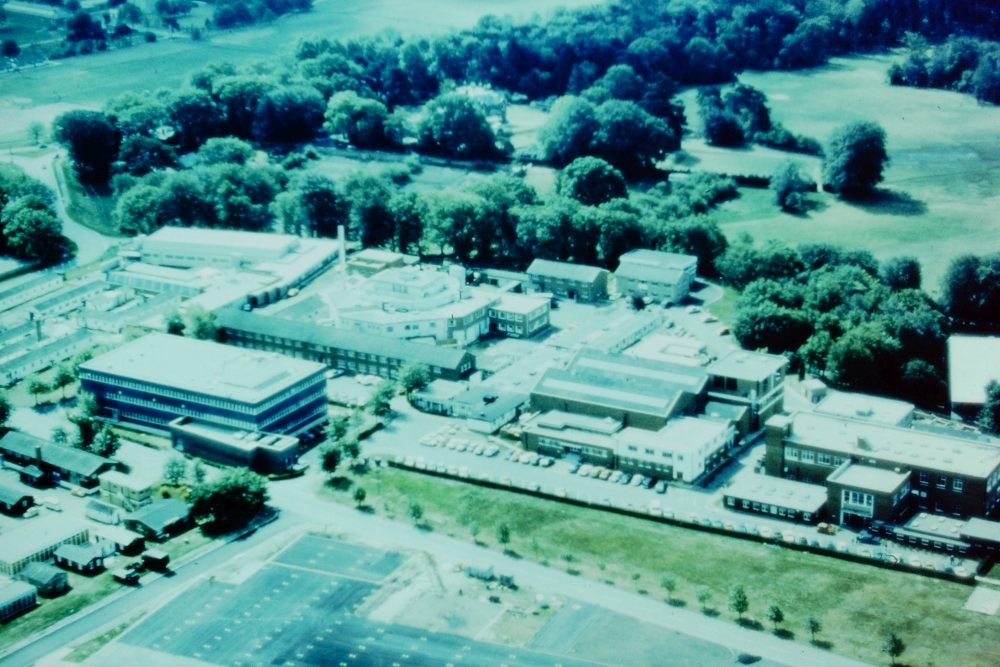The Royal Air Force Institute of Aviation Medicine (RAF IAM) started life in 1917 as the Royal Flying Corps (and subsequently the RAF) Physiological Laboratory at Hampstead. The urgent need for research into the effects of the aviation environment on aircrew and the development of equipment and procedures to protect them against these effects was recognised in the UK in the late 1930s.

By mid-1939 the Laboratory had moved to Farnborough as part of the RAE. In 1945 it moved to the south side of Farnborough airfield as an independent unit (renamed RAF IAM), but retained strong links to RAE. The IAM’s role was “to support the operational task of the Defence Services by research on the human factors that affect or may affect the safety, efficiency and survival of flying personnel of the UK Armed Forces, in both the short-term and the long-term”. It also provided specialist advice to the civilian aviation world and provided a variety of courses of instruction in aviation medicine.
The areas of research carried out at the IAM included:
- Altitude protection and breathing systems
- High G and G protection
- Impact deceleration
- Ejection seats
- Thermal stress (hot and cold) and protection
- Chemical Biological Radiological and Nuclear (CBRN) protection
- Aircrew equipment integration with the cockpit
- Accident investigation
- Vision and eye protection
- Disorientation and motion sickness
- Neurosciences
- Aviation psychology

Subject in decompression chamber 
Subject on decelerator track
To assist with this, IAM had a number of world class facilities, including decompression chambers, vibration laboratory, decelerator track, helmet impact test facility, flight simulator, sleep laboratory, climatic chambers (hot and cold), immersion pool, and the centrifuge. It also operated a number of trials aircraft over the years: Spitfire Mk9, Piston Provost, Meteor T7, Canberra B6, Hunter T7 and Hawk T1.

On 1 April 1994 part of the IAM joined the Defence Research Agency (DRA), with the remaining part becoming the newly-formed RAF School of Aviation Medicine (RAF SAM), responsible for teaching, training and operational support and retaining the centrifuge and trials aircraft. At the end of 1998 RAF SAM became part of the RAF Centre for Aviation Medicine and relocated to RAF Henlow. Operation of the centrifuge then passed to DERA and subsequently QinetiQ.
In 2006 the former RAF IAM site was sold for housing development and all its buildings were subsequently demolished, apart from the centrifuge which gained Grade II Listed Status on 16 August 2007. The centrifuge was bought by Raintree Developments Ltd in 2017 and remained in operation (by QinetiQ) until March 2019.

